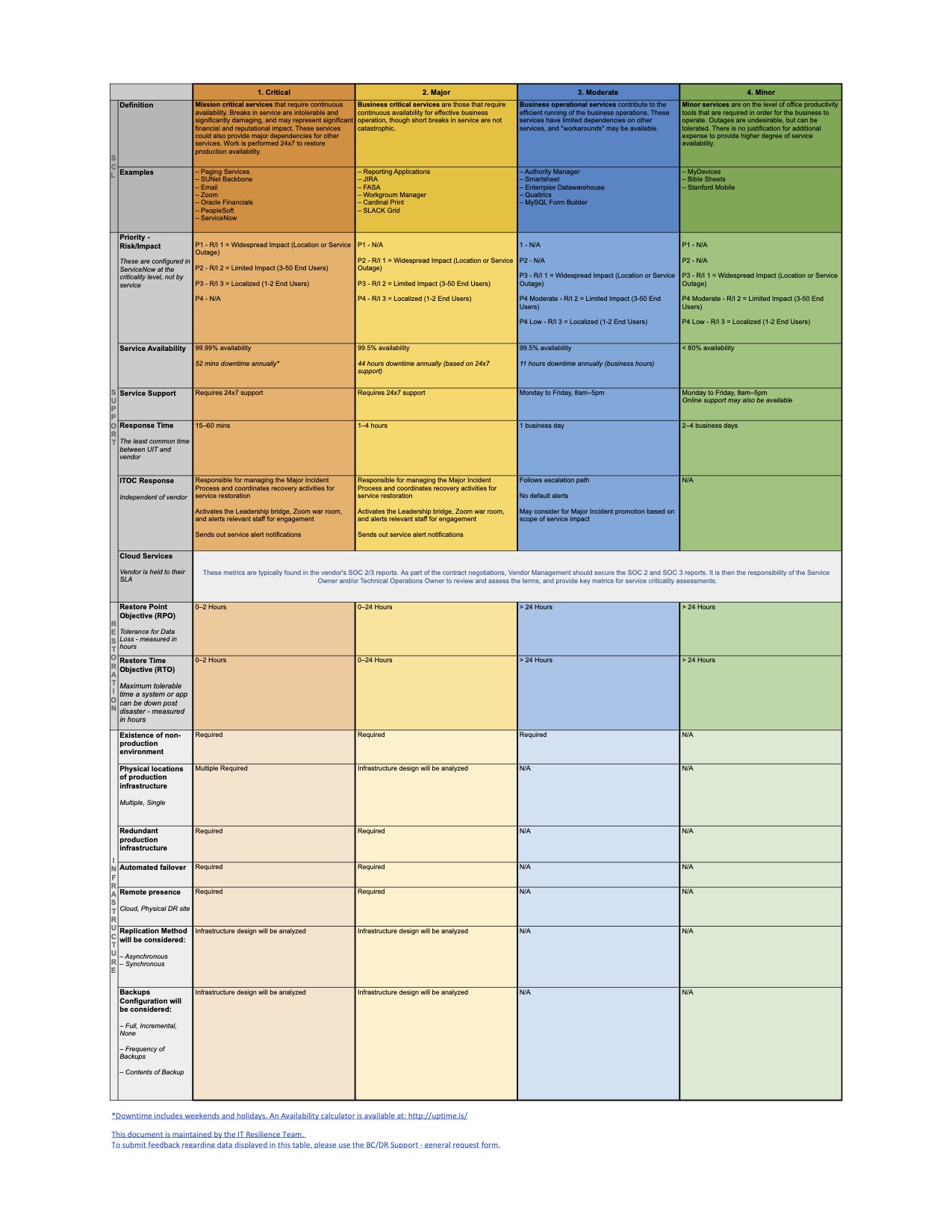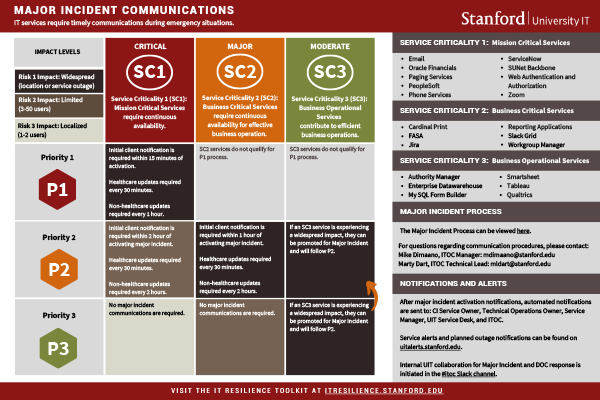University IT assigns each service offering with a criticality level designation that prescriptively applies a response process for varying degrees of service impact. Each criticality level considers the scope of users and their relative dependency on the named service. Higher expectations for availability will correlate directly with greater requirements for infrastructure resiliency and expansive support models. While services with fewer users and minimal dependency will require less robust infrastructure and lower support levels.
IT Resilience aggregated elements from the criticality assessment model, the Major Incident Process, and Risk/Impact and Priority correlations within Incident Management, to construct guidelines for each of the four service criticality levels. This resource can assist service owners in determining the criticality level that best aligns with the capabilities of their services.
In addition to these tools, UIT IT Service Management (ITSM) maintains a resource that defines service team roles. The Service Fundamentals section of the Service Management Toolkit is a helpful tool in setting expectations for responsibility with setting and supporting the various criticality levels.
Service Criticality Infographic
A quick overview of UIT Service Criticality Support Levels (click to expand).

- UIT Service Support Levels
- Every IT service requires one of four levels of support and availability during emergency situations
- 1 Critical. Mission critical services require continuous availability
- 2 Major. Business critical services require continuous availability for effective business operation
- 3 Moderate. Business operational services contribute to the efficient running of the business operations
- 4 Minor. Minor services are on the level of office productivity tools that are required in order for the business to operate
- 1. Mission Critical Services
- Support: 24x7
- Response time: 15 to 60 minutes
- Service Availability 99.99%
- Paging Services
- Phone Services
- SUNet Backbone
- Web Authentication and Authorization
- Zoom
- Oracle Financials
- PeopleSoft
- Service Now
- `
- 2. Business Critical Services
- Support 24 x 7
- Response Time: 1 to 4 Hours
- Service Availability: 99.5%
- Reporting Applications
- Jira
- FASA
- Workgroup Manager
- Slack Grid
- Cardinal Print
- 3. Business Operational Services
- Support: Monday to Friday, 8 a.m. to 5 p.m.
- Response Time: 1 Business Day
- Service Availability:99.5%
- Authority Manager
- Smartsheet
- Enterprise Data warehouse
- Qualtrics
- MySQL Form Builder
- 4. Minor Services
- Support: Monday to Friday 8 a.m. to 5 p.m.
- Response Time: 2 to 4 Business Days
- Service Availability 80%
- MyDevices
- Bible Sheets
- Stanford Mobile
Service Criticality Profiles
For greater detail regarding support models, restoration point objectives, infrastructure requirements, please review the service criticality profiles below (click to expand). This resource is maintained by IT Resilience.


